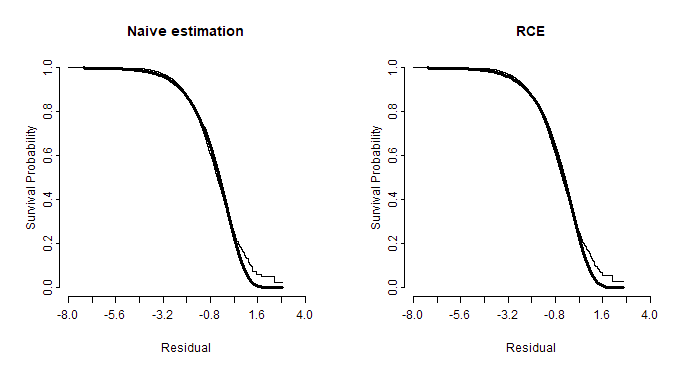October 22, 2025
The authors studied the approximate maximum likelihood estimation (AMLE), which has been proved to be an effective method to correct both measurement error and misclassification simultaneously in a logistic regression model, to correct biases caused by both measurement error and misclassification in covariates from a Weibull accelerated failure time model. Measurement error correction has come out of epidemiological literature and was applied more in simple models and even logistic regression, but it has made its way to survival analysis. Several different methods were developed from Frequentist to Bayesian. Although the Weibull regression model is often modeled through the accelerated failure time (AFT) format, none of the correction methods proposed that they had cited can handle the problem when a Weibull regression model has both measurement error in continuous covariates and misclassification in categorical variables. Addressing both measurement error and misclassification simultaneously in a single survival analysis becomes challenging since one has to consider considering errors caused by different types of covariates.
The authors then lay out additive measurement error and misclassification models. First they assume that the errors are non-differential. The true values of the X’s are related through surrogates through W’s via an additive error model: Wj = aj + bjXj + Uj where j=1…p and X is assumed to follow a multivariate normal distribution. Regression calibration (RC) is a widely accepted method to use for correcting measurement error. RC is the MLE of a likelihood function on the conditional expectation of true covariate on observed covariate. They show obtaining a regression calibration estimator (RCE) and native estimator using maximum likelihood approach with Newton-Raphson algorithm in the survreg function in the survival R package. They then go on to discuss issues with getting a closed form of the observed likelihood function and using an approximation from Gauss-Hermite Quadrature, but it is very computationally intensive and challenging if two covariates are measured incorrectly so they addressed this issue with AMLE in a Weibull regression model.
The AMLE applies a Taylor expansion to the density of the response variable conditional on the true covariates and then get an approximate density of the response variable conditional on observed covariate. This way they avoid integrating the non-linear integral and they can get a closed form solution. They go to a 4th order Taylor expansion and they used a full Newton method on the first derivative. However they recommend using 4th order Taylor expansion only if there p <= 4 and if p > 4 then use a second order Taylor expansion. The bias was better for the 4th order expansion so they used this for the simulation and real data results.
They then ran simulations to compare their AMLE to the Naïve, and RCE. Overall their AMLE performed well across different scenarios and misclassification rates but RCE was a better correction method of estimation if n is small and misclassification rates are large. They also checked goodness-of-fit with Cox-Snell residuals. They had found through simulations and real data analysis that when the measurement error is small the performance of the AMLE is mainly affected by misclassification rate and ca be improved by increasing sample size. When the measurement error is relatively large, the AMLE performance cannot be improved only by increasing sample size. Also, since the AMLE is based on a full Newton method on the score function then it can become more difficult to converge if number of error-prone covariates measured with errors becomes larger and also when the measurement errors in continuous covariates and misclassification in categorical covariates becomes larger. They discussed this issue and also that the variance estimation for the AMLE needs to be improved.
Written by,
Usha Govindarajulu
Keywords: survival, Weibull, measurement error, misclassification, regression calibration, AMLE
References:
Cao Z and Wong MY (2025). “Weibull Regression With Both Measurement Error and Misclassification in Covariates” Biometrical Journal. https://doi.org/10.1002/bimj.70083
